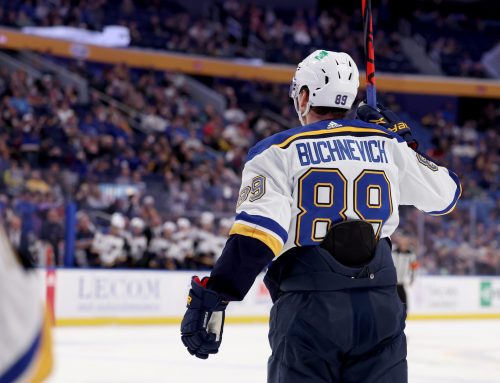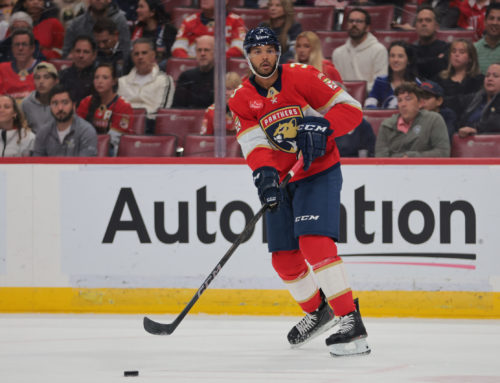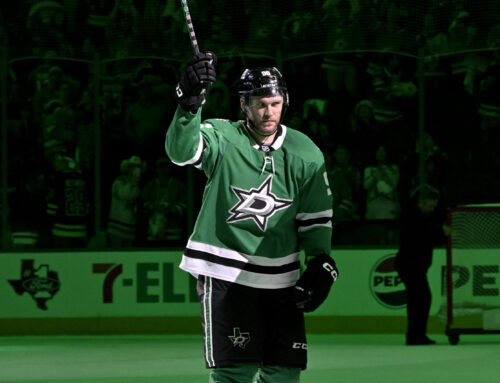
It became official as the Colorado Avalanche signed Andre Burakovsky to a one-year deal for $3.25M. The 24-year old was acquired last month and looks to rebound from the back-to-back 25-point seasons he posted in Washington.
For those in cap leagues, it’s unlikely he skates on the top line or top PP unit. That, combined with a lack of peripherals, makes that contract tough to roster. Even if he cracks 20 goals for the first time, it’ll be an empty 20 goals.
*
A couple first round picks signed their ELCs on Monday, as Jets defenceman Ville Heinola signed his three-year deal for an AAV of $1.137M and Sabres forward Dylan Cozens signed his (salary unknown, or at least I didn’t see it).
You can read Heinola’s profile here and the Cozens profile here. Our own Jokke Nevalainen did a deeper dive on Heinola that readers can peruse here.
*
We’re starting to get some season-long odds roll in and these are BetOnline’s odds for teams to win the East:
#NHL odds to win East, per BetOnline:
Tampa Bay 4/1
Boston 7/1
Toronto 7/1
Florida 9/1
Pittsburgh 10/1
Washington 10/1
NJ 12/1
Islanders 12/1
Rangers 12/1#Flyers 14/1
Carolina 20/1
Montreal 20/1
Buffalo 25/1
Columbus 25/1
Detroit 50/1
Ottawa 80/1— Sam Carchidi (@BroadStBull) July 15, 2019
It’s still early in the offseason but Carolina at 20/1, lower than the Rangers and Islanders, seems like a pretty good bet. I think there’s a good argument they’re the best team in the Metro, especially if Justin Williams re-signs. I get the concerns over goaltending, but the vast majority of teams have concerns about goaltending, the Rangers and Islanders among them.
*
Last week in these Ramblings I discussed the start of my rankings. They were just some general thoughts in the first iteration of my 2019-20 projections. Nothing too specific, just starting to get the ball rolling.
I took the weekend to start refining these projections. While I still don’t have rookies or goalies, and I do plan to introduce other stats that I haven’t used before, they have been adjusted for age and expected line mates. I should note that I will be refining these further, likely in September, but the goal here is to get a baseline for expectations and then see how those baselines and expectations evolve over the next two months based on further moves, potential injuries, ADPs, rookies, and more.
Let’s dig in.
Had an interesting interaction with Steve Laidlaw (hi, Steve!) on Sunday and it revolved around Ovechkin. My basic question focused on when Ovechkin’s age-related decline would finally hit. The guy turns 34 years old in September and played an eight-year high in TOI/game in 2018-19.
I’d argue we’ve already started to see it, in a way. Despite similar TOI from 2016-2019 compared to 2013-2016, his shots per game fell from 4.95 to 4.11. Over an 82-game season, that works out to 69 fewer shots. Had he shot his three-year average in 2018-19, he would have scored 42 goals. Instead, he shot a career-high 15.1 percent and he scored 51.
My projection has his shooting percentage drop to 13.1 percent while his shots per game also continue to decline, landing him at 305 shots. That brings him to an even 40 goals. My baseline for him right now is 40 goals and 38 assists.
Even with those drops, considering the hits and shots that he can still bring, Ovechkin is a top-10 fantasy choice. He’s still a top-5 draft pick in all likelihood because of the safety he affords due to peripheral stats.
I will outright say this makes me uneasy. Ovechkin really does look like a player who will never age. We know that isn’t true and that the decline comes eventually for everyone, but the trick is trying to pinpoint the season it begins. Anyone who bet against him the last two years was wrong. Is 2019-20 the year it finally happens?
One thing that these projections really hit home for me was just how much the NHL has changed. When I ran my first iteration, I had 43 players cracking 70 points and 37 players cracking 30 goals. Those number of players hitting those lofty goals really set off alarm bells in my head. It made me scurry over all my sheets to double-check references and formulas. It seemed something was surely wrong.
But the NHL has changed drastically over the last couple of years. From 2010-2017, scoring was stuck between 2.71 and 2.79 goals per team per game. The last two seasons have jumped to 2.97 in 2017-18 and finally to 3.01 in 2018-19. To put into perspective how much this has impacted the NHL, consider: in 2016-17, there were 26 different 30-goal scorers and 19 players with at least 70 points; in 2018-19, there were 45 players reach 30 goals and 55 players reach 70 points. There were also 74 players to reach at least 60 points, or more than six per team in 12-team fantasy leagues. Sixty points just doesn’t buy what it did two years ago.
I mention all this because I have James van Riemsdyk finishing 37th in goal scoring in 2019-20, and the final guy I have projected to crack 30 goals. If 37 players managed 30 goals, it would represent a decline from 2018-19, but my projections take a longer view than just one season, so we’re still including 2016-17 as part of this. As such, most of these projections will look conservative compared to the scoring explosion we’ve seen the last two seasons.
Anyway, my projection for JvR – 30.1 goals, 26.0 assists, 234.4 shots, 18.3 PPPs – isn’t too dissimilar from what he produced in 2017-18 and he was a top-100 player. Wayne Simmonds not being with the team should clear the way for JvR to regain his consistent top PP slotting and that helps his projection a lot. I’ll be interested to see his ADP this year because anywhere outside the top-100 seems like a decent buying opportunity, and the lower his ADP, the better the value.
My projections have Arvidsson finishing eighth in the league with 37 goals. Now, again, this is conservative – there were six guys tied for sixth in goals last year with 41. But it does show that in comparison to the rest of the league, it’s time we start talking about Arvidsson as one of the premier scoring talents.
I don’t think that’s hyperbole, either. In total, he’s 19th in total goals scored over the last three years with 94. On a per-game basis, he’s tied for 12th with Vladimir Tarasenko and Cam Atkinson. On a per-minute basis at five-on-five, he’s second behind only Auston Matthews.
What has hindered Arvidsson in the past is a lack of PP production. He has 11 career power-play goals, having scored 10 over the last three years. In that span, among 105 forwards with at least 500 PP minutes, he’s 91st in goals per minute. For a guy who is so good scoring at even strength, it’s an incredible discrepancy just how poor his power-play goal scoring is.
Nashville’s power play struggles are well-known but hopefully the addition of Matt Duchene turns things around. The one thing keeping Arvidsson, and others, from being fantasy superstars is PP production. Even without it, though, Arvidsson is a good target after the early rounds to lock down that goal-scoring winger.
Not to give too much away but Tyson Barrie is a guy I write about in the upcoming 2019-20 Dobber Guide (you can pre-order here!) as a concern for 2019-20. Not for anything he did but, more or less, because he’ll take a big hit to his PP production.
Barrie was on the ice for 2.63 goals per 60 minutes at even strength last year in Colorado. As a team, at even strength, the Leafs scored 3.07. Assuming those numbers, and his ice time, hold constant for 2019-20, that would put Barrie on the ice for an extra nine goals at even strength. At an individual points percentage of 50 percent, which was his rate in 2018-29, we can add 4-5 points to his total last year.
On the flipside, Barrie played 315:15 on the power play last year, over four minutes per game. Morgan Rielly’s second fiddle last year, Jake Gardiner, averaged 1:51 per game. It’s very possible we see Barrie’s PP rate cut in half compared to 2018-19. If his PP production were to cut in half, the gain of 4-5 points at even strength would be more than mitigated by the 12-13 PPP drop we could expect.
What expectations are of Barrie in 2019-20 will be directly tied to expectations on the power play. My assumption is that while Barrie does see some time on the top PP unit, it still stays mostly in Rielly’s hands. My 75/25 split in Rielly’s favour – it was considerably less for Gardiner – brings Barrie’s projection to 53.3 points.
That projection makes sense based on my assumptions. He had 59 points in 78 games last year. Add four ES points and then subtract what I expect his PP loss to be (~10), and we end up with 53 points in 78 games.
Of course, if someone is working with the assumption that Barrie takes over the top PP unit, his projection could be 65 points, or more. I think this is a player that will split the fantasy community and his ADP/ranking will fluctuate wildly depending on the source considered.





 WSH
WSH CAR
CAR WPG
WPG DAL
DAL TOR
TOR DET
DET MIN
MIN EDM
EDM FLA
FLA VGK
VGK
